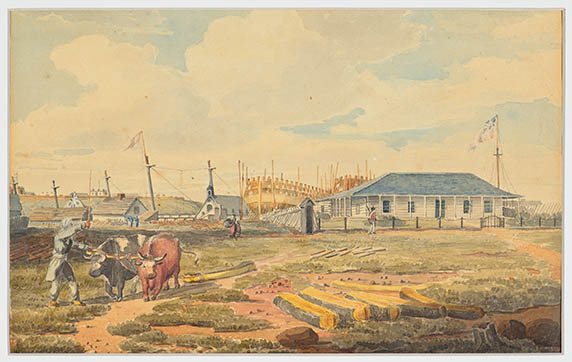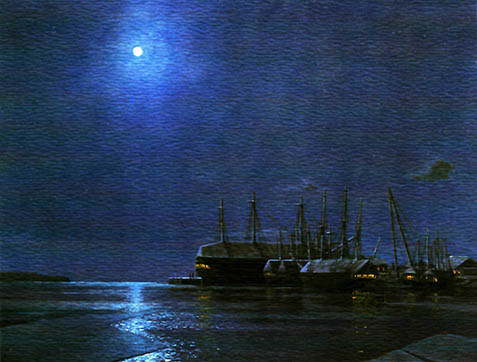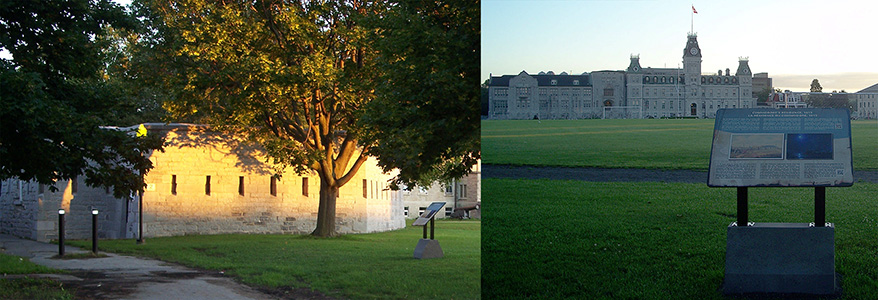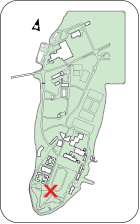On 19 March 1813 Sir James Yeo, a brave and audacious commander earlier in the Napoleonic War, was appointed Commodore and senior officer on the Lakes of Canada. Having never commanded a Squadron before, he was instructed by the Admiralty not to undertake operations without "the full concurrence and approbation" of Sir George Prevost, the Captain-General and Governor-in-Chief of British North America. Moreover, Yeo speedily discovered that his instinct for daring initiatives also had to be tempered by larger interests: control over Lake Ontario, the crucial link between the arsenal-dockyard at Kingston and all of the Anglo-Canadian naval and military operations westward, as well as those on Lake Champlain.
 The Commodore's Residence on Point Frederick is shown in this contemporary painting. In the background, Wolfe and Canada, larger sister ships of St. Lawrence are under construction in their slips. Painting with the permission of the Royal Military College of Canada.
The Commodore's Residence on Point Frederick is shown in this contemporary painting. In the background, Wolfe and Canada, larger sister ships of St. Lawrence are under construction in their slips. Painting with the permission of the Royal Military College of Canada.
 Painting: Kingston Harbour, a quiet evening late in the war with moonlight illuminating thin ice and partially de-rigged ships. Stern cabin lights show sailors are still awake after the early nightfall. Painting courtesy of the artist, Peter Rindlisbacher.
Painting: Kingston Harbour, a quiet evening late in the war with moonlight illuminating thin ice and partially de-rigged ships. Stern cabin lights show sailors are still awake after the early nightfall. Painting courtesy of the artist, Peter Rindlisbacher.
With the Royal Navy having assumed responsibility for the naval base at Kingston and of all the warships on the Great Lakes, under Yeo's leadership the strength and importance of this inland naval force grew immensely. In recognition in May 1814, Yeo's command was up-graded making him "Commander in Chief of His Majesty's Ships and Vessels on the Lakes of Canada." Note the first rate ships, Canada and Wolfe, (each planned to be of 120 guns) under construction in the dockyard of Navy Bay to the left of Yeo's residence.
Walking Tour

 Panel 4 is located at the entrance to Fort Frederick and sited back towards Navy Bay and the ship building sites. The panel refers to Canada, and Wolfe, under construction.
Panel 4 is located at the entrance to Fort Frederick and sited back towards Navy Bay and the ship building sites. The panel refers to Canada, and Wolfe, under construction.